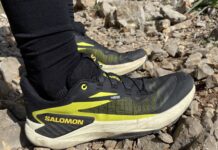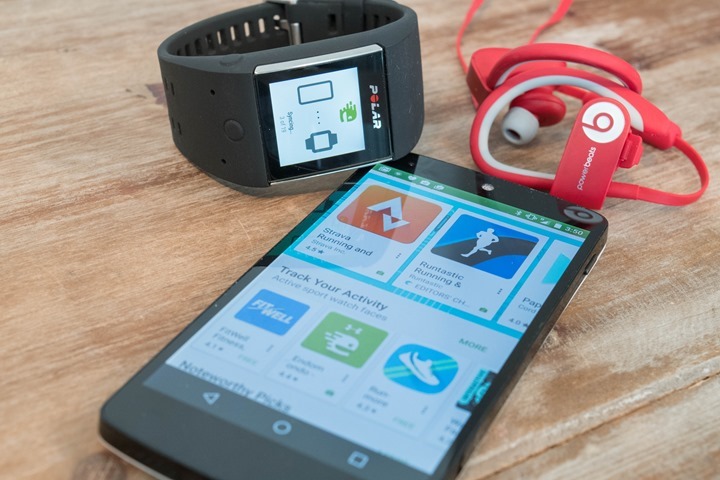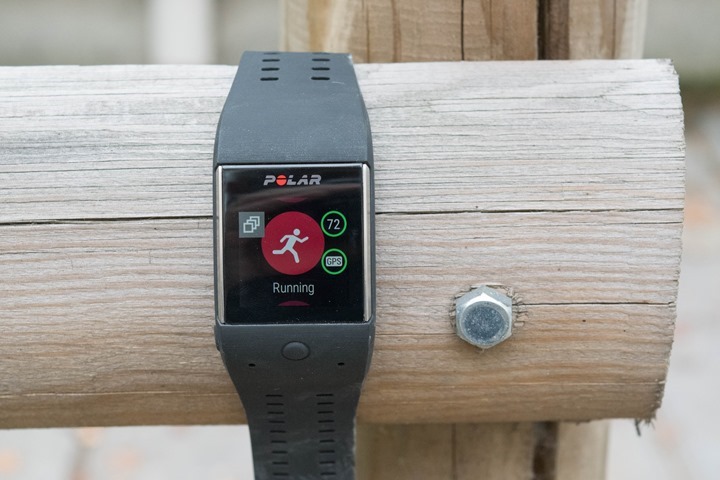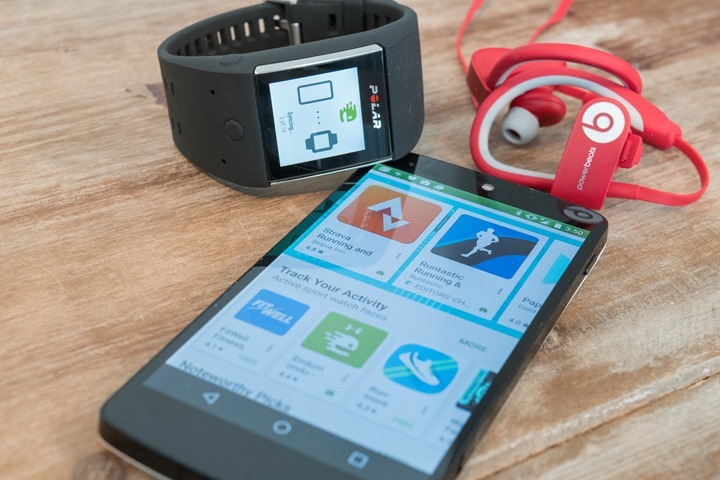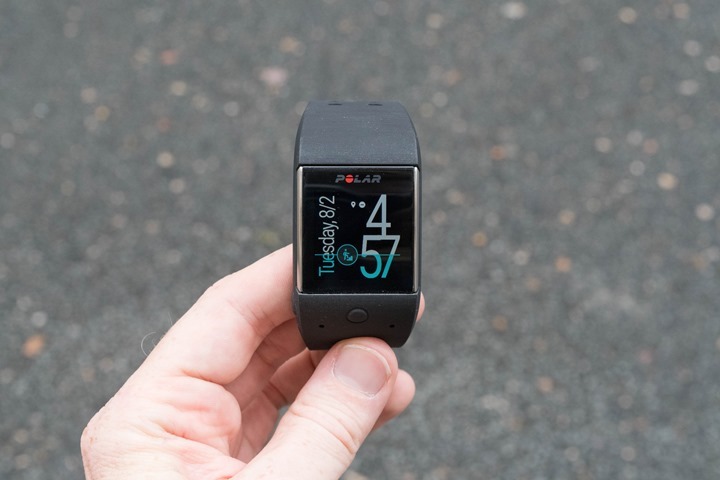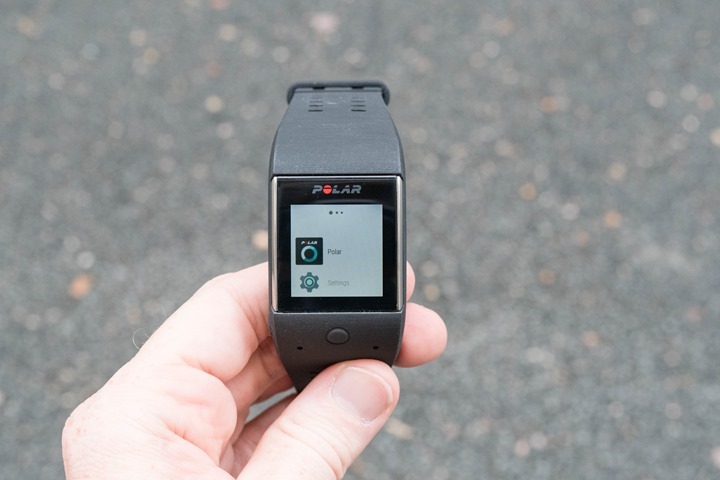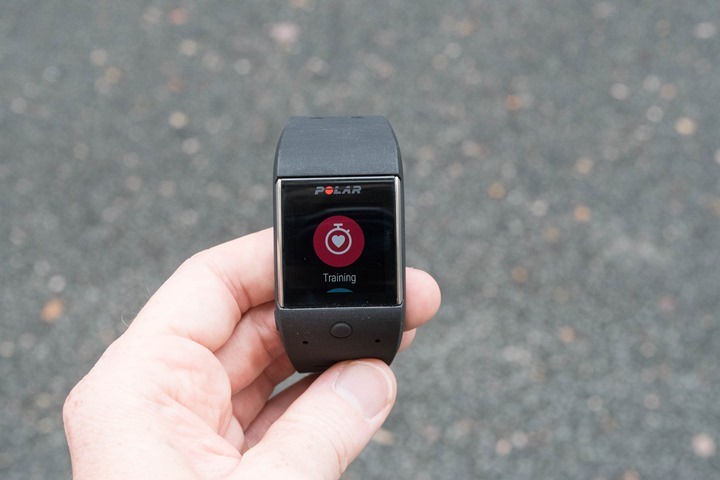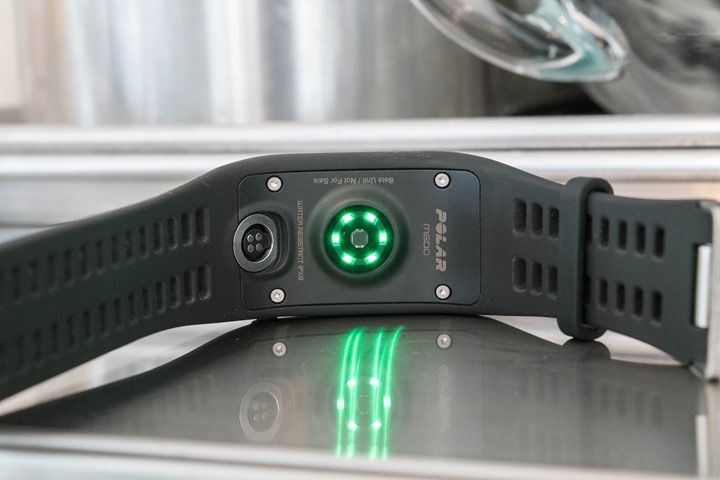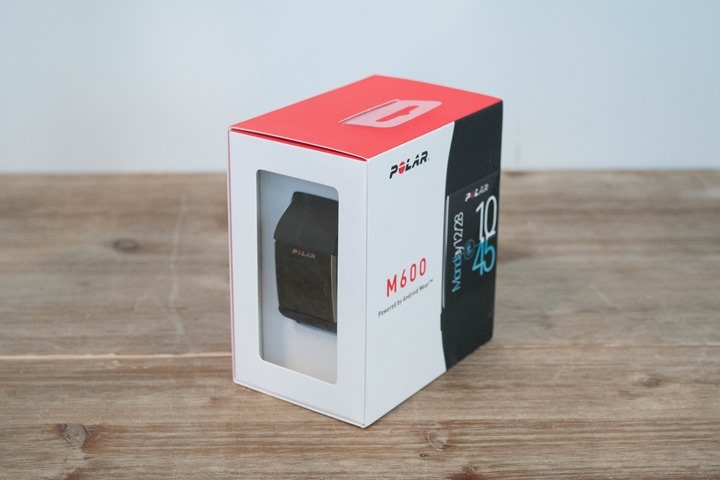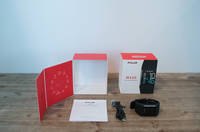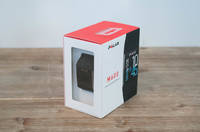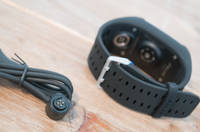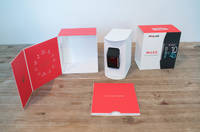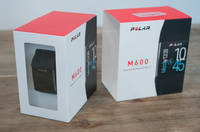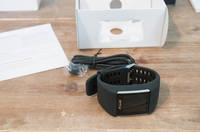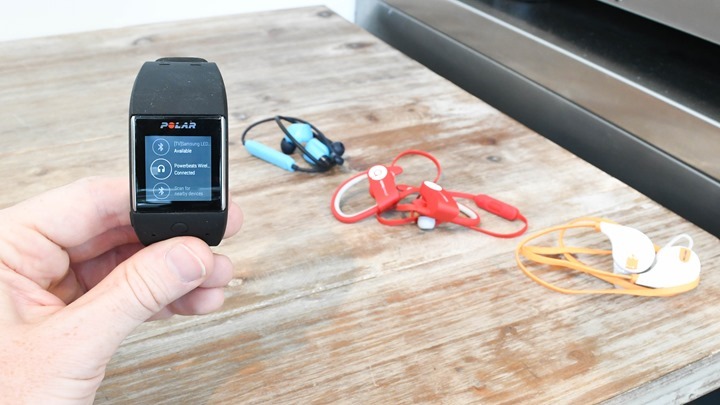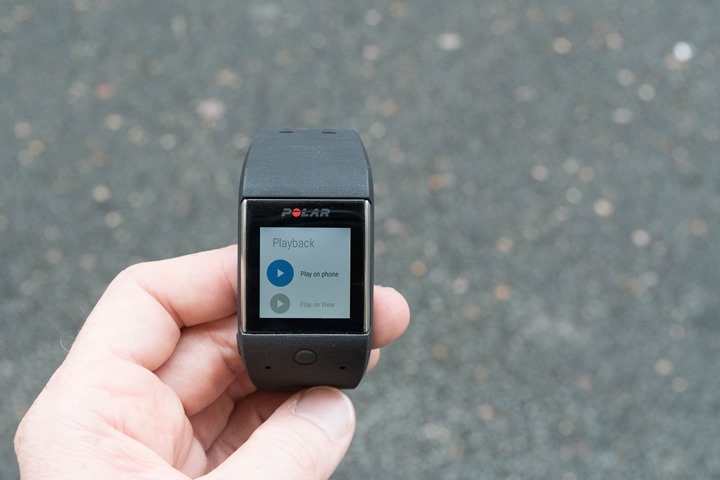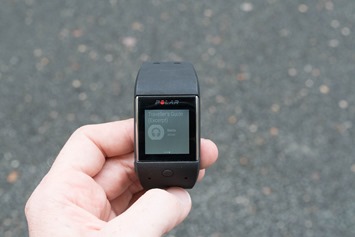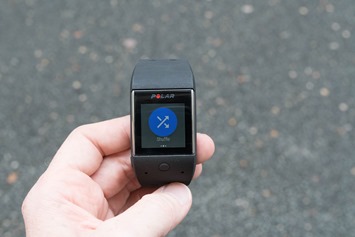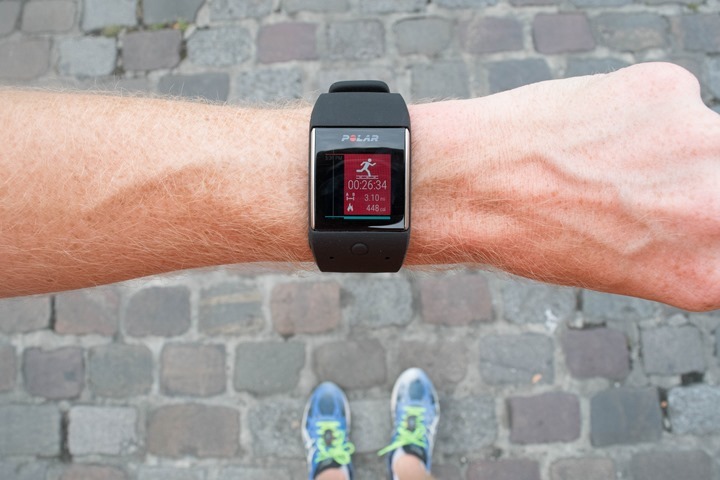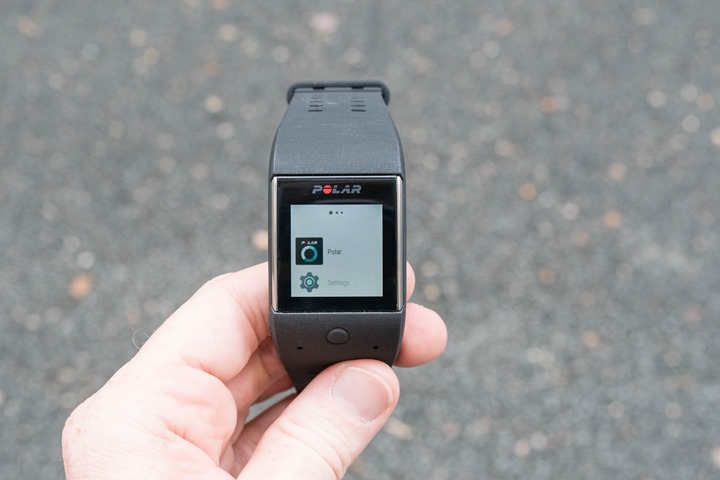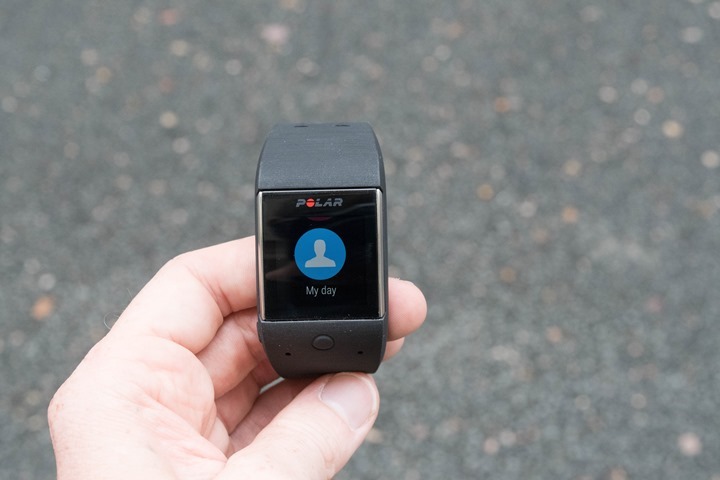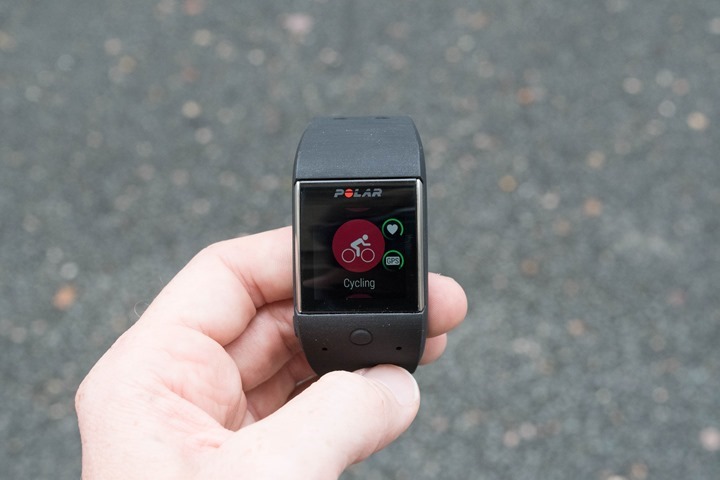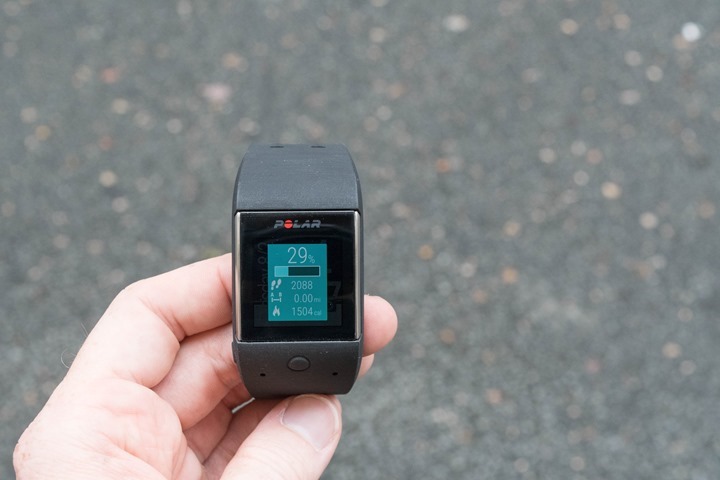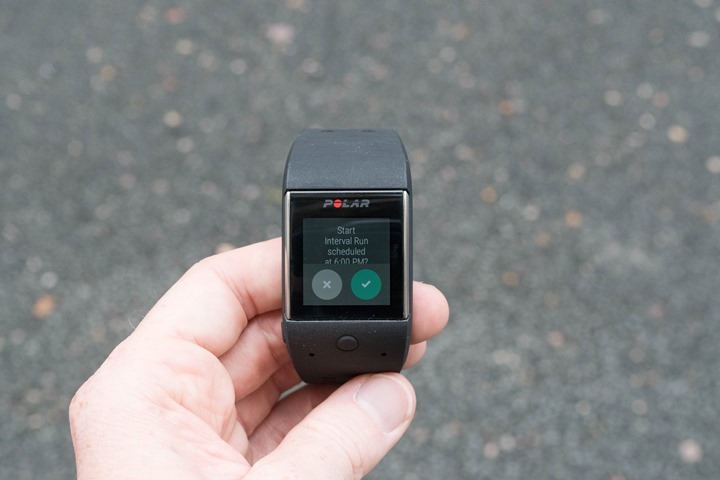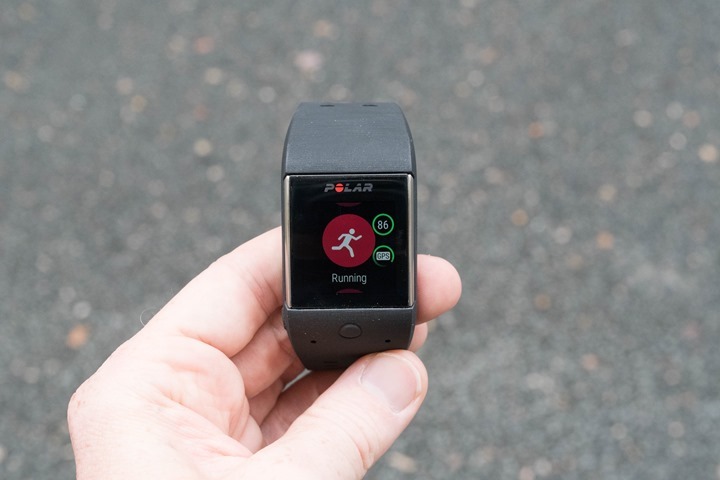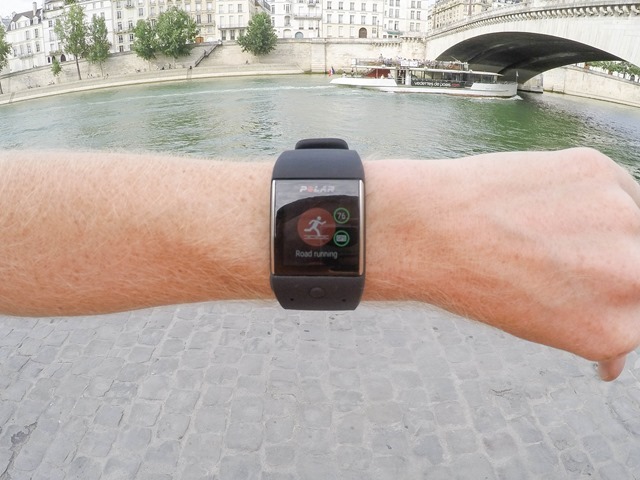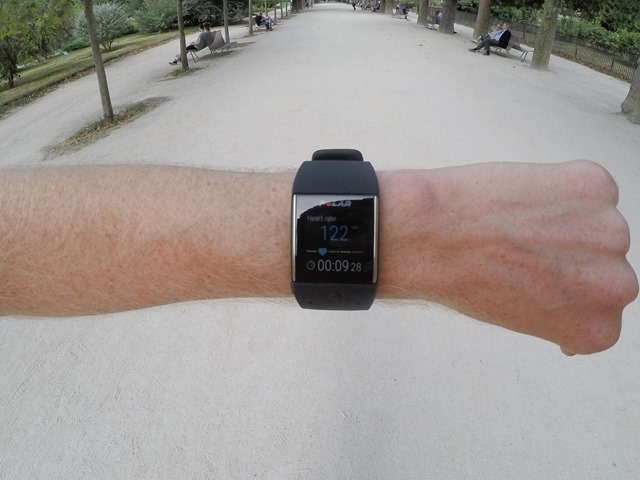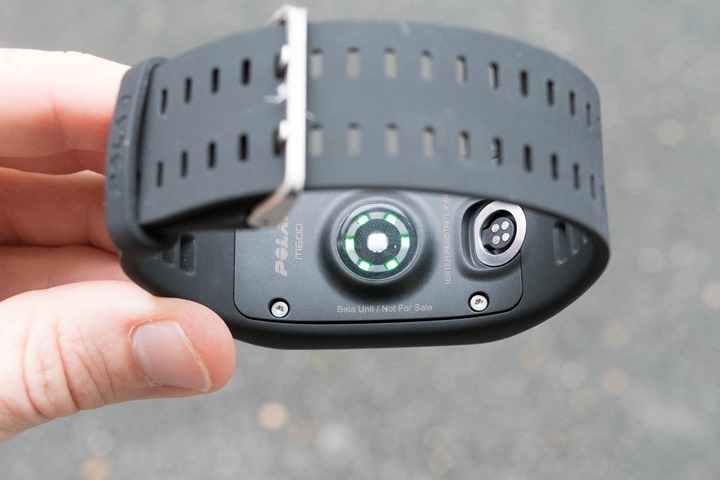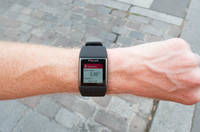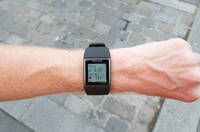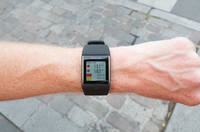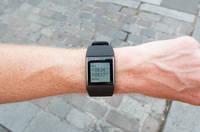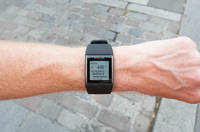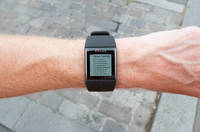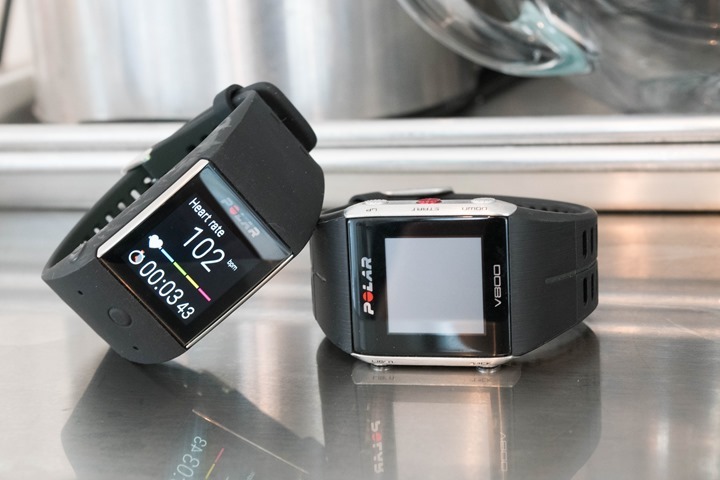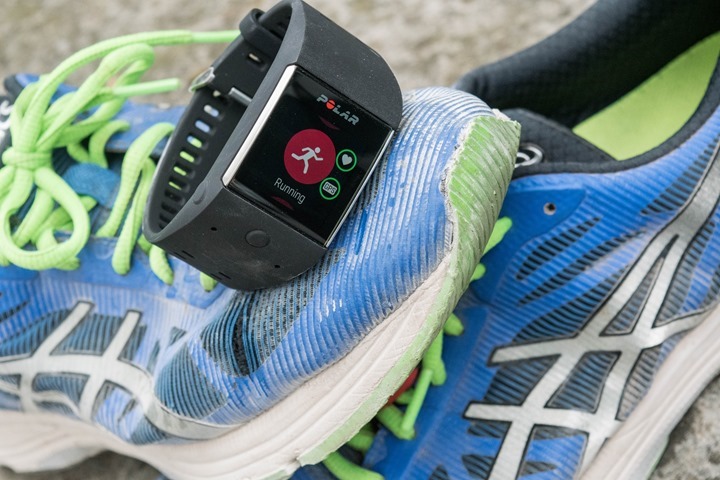Today Polar announced their latest wearable, and in the process also signaled a shift in direction to a far more open platform than they’ve ever had in their 39 year history.
The Polar M600 takes the best of their M400 GPS running watch (mid-range unit released 2 years ago) and combines it with a revamped optical HR sensor and adds in some. With that you’ll get all of the typical Polar fitness focused features like daily step counting, inactivity alerts and GPS sport tracking. But you’ll also now get the benefits of being on the more open Android platform, such that 3rd parties can easily develop apps (many already exist) for Android Wear. Previously Polar had no such option for 3rd parties to place apps on the watch.
I’ve got a prototype/beta unit that I’ve been playing with it a bit, though it’s still early. The watch isn’t set to ship until next month (September), so things certainly could change between now and then (for better or worse). This is merely a preview, and not a full in-depth review.
An Overview:
Sometimes it’s easier to explain things in bullets, and this is one of those cases. Here’s the more interesting specs (in my opinion) on this watch. The full tech feature details I’ve listed later in the product comparison toolset.
– Android Wear based platform
– Fully waterproofed for swimming (IPX8)
– 10 hours GPS-on battery life (in tracking)
– 2 Days GPS-off battery life (regular watch mode)
– MediaTek MT2601 GPS chipset with GLONASS
– Color 1.3” TFT touch screen (240x240px, 260dpi)
– Display is inset 3rd Gen Corning Gorilla Glass, with a stainless steel bezel
– Music storage and playback via Bluetooth (4GB)
– WiFi enabled
– Activity Tracking (i.e. steps/sleep/calories)
– Optical HR sensor (using 6 LED’s now)
– GPS based altimeter
– Training Load/Recovery within Polar platform
– Downloadable/structured works & training programs
– Customizable training views (just like other Polar units)
Ok, so those are the basics. The biggie there is obviously the Android Wear piece, but also the legit waterproofing. Most other Android Wear watches only have basic waterproofing for splashes but not usually showers (i.e. IP67/68), whereas this has legit swimming waterproofing. So that’s definitely a step up on the competitors. On the flipside, some Android Wear units have 3G and related connectivity built-in, giving you more flexibility sans-phone. Interestingly, this is MediaTek’s (GPS chipset maker) first Android Wear device.
With the Android Wear piece this means that you’ll get access to the Android Wear focused apps via the Google Play store. Unlike an Apple Watch though, your phone doesn’t have to be tied to that same platform. However you’ll get a better integration experience on Android than you would on iOS for Android Wear watches. And in the case of the Polar M600 and its 500mAH battery, you’ll also get better battery life than some other Android Wear watches (48hrs for Android, and officially “less” for iOS, though it’s more about 24hrs on iOS).
Android Wear takes care of base smartwatch features that Polar used to have to handle themselves. This includes:
– Call handling
– Smartphone notifications
– Calendar notifications
– Customization of watch faces
But it also expands out beyond what Polar has done historically, adding in the following:
– Voice control
– Music control
– Responding to e-mails and texts (as opposed to just reading them)
– Weather integration
– A crapton more via custom apps (Android phones only)
And the apps is really what matters here with Android Wear. Without apps, the core of the watch can realistically be handled by Polar. But the apps enable 3rd parties to start leveraging the platform. And thankfully those such parties are already here today…as long as you have an Android device. You can’t load custom apps with an iOS device. Nonetheless, heavy hitters today in the fitness realm include:
– Strava
– Runtastic
– Endomondo
– Under Armour Record
The way you access these apps on the M600 is to first grab an Android phone. If you’ve already got that, then you can go into the Google Play store and find apps that have Android Wear companion apps. These apps will automatically install on your M600 if the Android phone app has such a companion app.
I’ve put together a bit of a Polar M600 Android Wear app & platform differences focused overview here in the following video:
Note that if you’re unfamiliar with the nuances of having an Android Wear device on iOS, this post is a pretty good primer. Also note that Polar confirmed the M600 will support Android Wear 2.0 once it’s available.
But if you’re a regular Polar person, you’ll find the overall base experience very similar to past watches. Except now on a prettier display. For starters, from the default watch face screen Polar has loaded you’ll see the familiar font and UI screens as you would have on previous watches – especially the A360.
Same goes for the activity tracking screen/timeline:
Of course when you swipe right to get to the apps menu, you’ll feel more like Android Wear again:
If you’re wondering how well that touchscreen works in the rain – well, here’s a quick video I put together to answer and demonstrate that:
Next, for training programs, you’d dive into the Polar Flow app, which brings you back to the Polar world:
And if you wanted to change your screen customization, you’d do so online like other Polar devices:
The optical HR sensor also got a revamp, now sporting 6 LED’s (from two previously on the A360). That unit came out a little under a year ago, and I didn’t find Polar’s variant of an optical HR sensor terribly awesome (as discussed in detail in my A360 review).
Polar went with a 6 LED configuration as they found that with some of the larger mass wearables, you were getting a bit of higher noise levels and more artifacts. By going with a 6 LED configuration, they were able to get a much cleaner signal and reduce the noise. However they noted that the number of LED’s really would depend on a given device. Six may not always be the right answer, but for this particular device, 6 works well. They also noted that while the sensor should be equal to or better than the A360, that many improvements via software updates have changed the A360 accuracy since last winter. Those are now present in both devices.
I dive into my first run experiences in terms of accuracy in the next section. Note that Polar still hasn’t enabled any 24×7 HR tracking however. So heart rate is only recorded on a per-activity basis, and not 24×7 like with numerous other competitors. Polar says that they’re looking at continuous HR and know there is interest in it.
What’s in the box:
Ok, so I’ve covered all the features, but I know some of you are looking to see what’s in the actual retail packaging. And there’s no better place to check that out than the video I put together below:
Or, if videos aren’t your thing – here’s a simple gallery view of that very same box:
With everything unboxed and explained, let’s move onto some workouts.
Music Storage & Playback:
While the watch may not be aimed at the high performance crowd, one feature that’s likely to appeal to many is the ability to play back music that’s stored on the watch itself. Via Android Wear (and if you have an Android phone) you can transfer music to the M600 and then play it back via Bluetooth headphones.
To do so you’ll need to ensure your music is all happy within the Google Play app on your Android phone. Next, on the M600 crack open the Play Music app, which then queries you on what to do next:
At this point you can choose to play music on the M600, or you can control music on your phone. In this case, I’m all about the M600 playing it on itself. So I’ll choose that. It’s at this point that if it’s your first time doing so it’ll ask if you want to sync your music from the Android phone to the M600, I selected yes so that it does it automatically.
The M600 has 4GB of internal space, but after the base OS related stuff, you’re looking at about 2.6GB of usable space for your music and any other apps you load on it.
Last but not least, you’ll need some sort of Bluetooth audio device. It could be Bluetooth headphones (such as these $20 MPOW ones I often use, or these $135 Powerbeats ones), or it could be something like a JBL portable Bluetooth Speaker. Doesn’t really matter, as long as it’s Bluetooth audio. From there you’ll get your music machine in pairing mode, and then dive into the Android Wear Bluetooth menus to pair it up. Quick and easy.
At which point you can head back to the Play Music app and start playing your music as you see fit:
Finally, the battery life is actually really solid for music playback. Polar has benchmarked it at 6 hours for GPS enabled + Music via Bluetooth + optical heart rate enabled. That’s really very strong compared to other fitness watches that can do the same.
First Run Experience:
With everything all set it was time for my first run. I decided on a simple 5K run to get the hang of things, before going longer with it.
The first order of business is heading outside. Since the M600 has GPS internally, there’s no need to bring your phone along. Again – you can leave your phone behind.
Once ready you’ll go ahead and swipe to the Polar Flow menu.
Alternatively you can also just speak to the watch and tell it “OK Google, Start a Run”, and it’ll crack open the same Polar Flow app if you’ve configured it that way. The only challenge there is that when it auto-starts the Polar Flow app, it immediately starts the recording time, before it even has a chance to initial GPS lock or complete HR lock.
Once inside the app you’ll see some familiar Polar watch options: Training, My Day, and Sync (if on iOS, not on Android as it just does it continuously).
If you tap Training, you’ll then be given a list of sports to start:
Meanwhile, if you tap ‘My Day’, you’ll be given an overview of your day in terms of activity. This includes steps, distance, calories, and percentage towards a goal. It’ll also show you any sport activities you did that day:
Back at the training screen, if I had a workout transferred/scheduled for this day, it would have given me the opportunity to do that structured workout:
Instead though, I can swipe up/down through all the sport profiles that I’ve loaded onto my watch using the Polar Flow platform. Each profile allows you to customize data page and configuration settings for that sport. It also gives you more accurate calorie burn data.
These can all be changed on Polar Flow:
Along the right side of the watch display it’ll show you status of both optical heart rate and GPS acquisition. Once completed both will be green all the way around, and your HR bpm will show:
With that all ready, you’ll simply tap the sport name to start the workout. Once you do that the timer immediately starts
From there I was out on my run. The M600 allows me to swipe through data pages if I want to look at other data metrics (ones that I’ve pre-configured). You can also swipe to a pause screen to temporarily pause (and then stop/save) your run.
I can use the bottom button to trigger laps, or use automatic laps. Or both.
Note that the display will dim somewhat when your wrist isn’t facing you. This makes for a bit of a lag between when you hold your wrist up to check stats, and when you can actually read the screen. At sunset it’s easy to read the dimmed screen, but on a bright sunny day (or at night), it’s tough. Polar says they’re looking to allow you to have the screen stay fully on when in a sport mode, which will solve that issue.
The heart rate shown on your screen comes from the optical HR sensor (unless you’ve also paired a Bluetooth Smart heart rate strap). In this particular test run, the optical HR sensor seemed to perform much better than the Polar A360 I tested this past winter. But Polar has also had numerous optical HR software updates since then.
In my test I wore a chest strap paired to one watch, and then used another watch on another wrist with optical HR sensor (Garmin FR735XT). I then overlaid all three onto the same chart below:
For this run, I started off with a warm-up, then did some simple repetitive internals. This sort of workout is one of my go-to’s for testing optical HR sensors, as it easily allows me to see if there is any lag on the HR sensor.
You can see that the M600 generally did well, though it did stumble on the first interval. However subsequent intervals were generally pretty close. The FR735XT seemed to catch the increase in intensity faster than the M600, but the M600 seemed to detect the walking breaks quicker than the FR735XT.
Polar says that the hardware on the M600 I have is final, though they expect many more software tweaks over the next 30-60 days until release. Said differently: This is still a beta unit. Actually, it even says it on the back of the watch:
From a GPS accuracy standpoint, things were ok for this initial run, though it did get mixed up early on for some time near the tunnel, and then again when I ran directly alongside some 6-8 story buildings. You can see the three plots overlaid below. This route was in the city and included a tunnel almost immediately upon starting, but also had some more open areas in the parks as well. This particular route can often be tricky for GPS units, especially one of the bridge crossing (as seen there where the Fenix3 cut the corner), and then immediately afterwards near the buildings on the island (where the M600 tripped up briefly).
Note that if you’d like to take a close look at these files, you can do so with the DCR Analyzer tool here.
Finally, upon completion of the run you’ll get a summary screen you can swipe through with additional details:
Further, the run is automatically uploaded to Polar Flow, where you can look at it on both your phone and online. Also, this will sync to Strava as well if you have that setup.
Note that if you use a 3rd party Android Wear app (i.e. Runtastic) to complete your activity, it won’t show up in the Polar Flow platform (though you would get credit for steps). Those 3rd party apps can leverage the optical HR sensor though.
Product Comparison:
I’ve added the Polar M600 into the product comparison database, which allows you to compare it against other watches I’ve had hands-on time with. Thus you can match it up against anything from Polar, Garmin, Fitbit, and others. Note that I realize that I don’t have all the Android Wear watches in there, which is simply a result of me not having time with every Android Wear device out there. I’ll be working to add more in there over time.
For below, I’ve compared the M600 against the Garmin Vivoactive HR and the Fitbit Surge. It’s kinda an awkward direct comparison of units, but it seems to fit the bill most logically in terms of the specific market this watch is targeted at (unofficially a geeky non high end performance focused fitness person…roughly). Except I threw in the Polar V800 as a Polar reference point.
| Function/Feature | Polar M600 | Fitbit Surge | Garmin Vivoactive HR | Polar V800 |
|---|---|---|---|---|
| Copyright DC Rainmaker – Updated August 3rd, 2016 @ 6:26 amNew Window Expand table for more results | ||||
| Price | $329 | $249 | $249 | $449 |
| Product Announcement Date | Aug 3rd, 2016 | Oct 27th, 2014 | Feb 19th, 2016 | Jan 6th, 2014 |
| Actual Availability/Shipping Date | Sept 2016 | Dec 10th, 2014 | Q2 2016 | May 2014 |
| Data Transfer | USB/Bluetooth Smart/WiFi | Bluetooth Smart | USB, BLUETOOTH SMART | USB, BLUETOOTH SMART |
| Waterproofing | IPX | ATM5 (~50m), but no swimming | 50 meters | Yes – 30m |
| Battery Life (GPS) | 10 hours | 10 hours GPS on (5-7 days in time/step mode) | 13 hours GPS on | Up to 50 hours |
| Recording Interval | 1-second | 1-second | Smart Recording | 1s |
| Satellite Pre-Loading via Computer | Yes | No | Yes | Sorta, predictive but not cached. |
| Quick Satellite Reception | Great | So-so | Yes | Good |
| Alerts | Yes | Vibrate/Visual | Vibrate/Sound/Visual | |
Remember that you can build your own product comparison chart here, using the nifty product comparison tool.
Wrap Up:
Overall the M600 is an impressive little beast, in every sense of the word. It’s a beast in terms of having music, GPS, a fairly decent optical HR sensor, and Android Wear all packed into one unit at $329USD. Not to mention it manages 8-10 hours of GPS on time, which is more than enough for the vast majority of activities of this target market. Let alone the solid 6 hours for GPS + music + optical HR…that’s impressive. Yet it’s also a beast in that it burns through battery life pretty quickly in just standby mode, like a hungry hippo.
Note that I asked Polar whether they thought this means that all future Polar wearables are Android Wear, and they noted that at this point that was unlikely to be the case. They pointed out that when you get to performance optimized devices (i.e. the V800), users are looking for better battery life (be it GPS-on, or standby), as well as more dedicated buttons. At the movement, Android Wear presents “challenges” for those types of devices. Thus the company expects to continue to make platform appropriate choices going forward depending on the market for the device.
At this juncture some of you might be wondering if/when Garmin might make a similar move. Yet, I think Polar actually answered that question for Garmin without realizing it. In Garmin’s case, they have Connect IQ. That allows 3rd parties to develop apps, something that Polar lacked until now. However that platform kinda differs from Android wear in many ways, but most notably is the type of apps you get. With Android Wear the apps are major companies (i.e. Strava, hotels, airlines, etc…). Whereas on Connect IQ they are more sport/fitness focused, and smaller companies. However, with apps on higher end performance devices (and to what Polar was saying regarding something like a V800), you don’t really want Android Wear as it sits today in terms of battery life. So Connect IQ makes more sense there. Whereas for general ‘lifestyle’ type devices (i.e. the M600 or the Vivoactive HR), then Android Wear may be a better fit in terms of the average consumer. Said differently, both Garmin (and Pebble as well) seem to be doing fairly well with their current app platform strategies, so I don’t expect any changes there.
I’m looking forward to seeing how this unit matures by time they start shipping in September. Right now the hardware feels solid (and is final), and the OS feels pretty mature for a beta/prototype device. I only noticed a handful of software quirks, all of which were more Android Wear related bugs than Polar bugs. But of course at the end of the day, it’s Polar’s watch, and thus Polar’s branding – regardless of the bug origination. Still, none of the bugs I saw in my beta were deal killers, but rather silly things like the WiFi resetting during an update download. So not too shabby given the beta state.
With that, thanks for reading, and feel free to drop any question down below!












